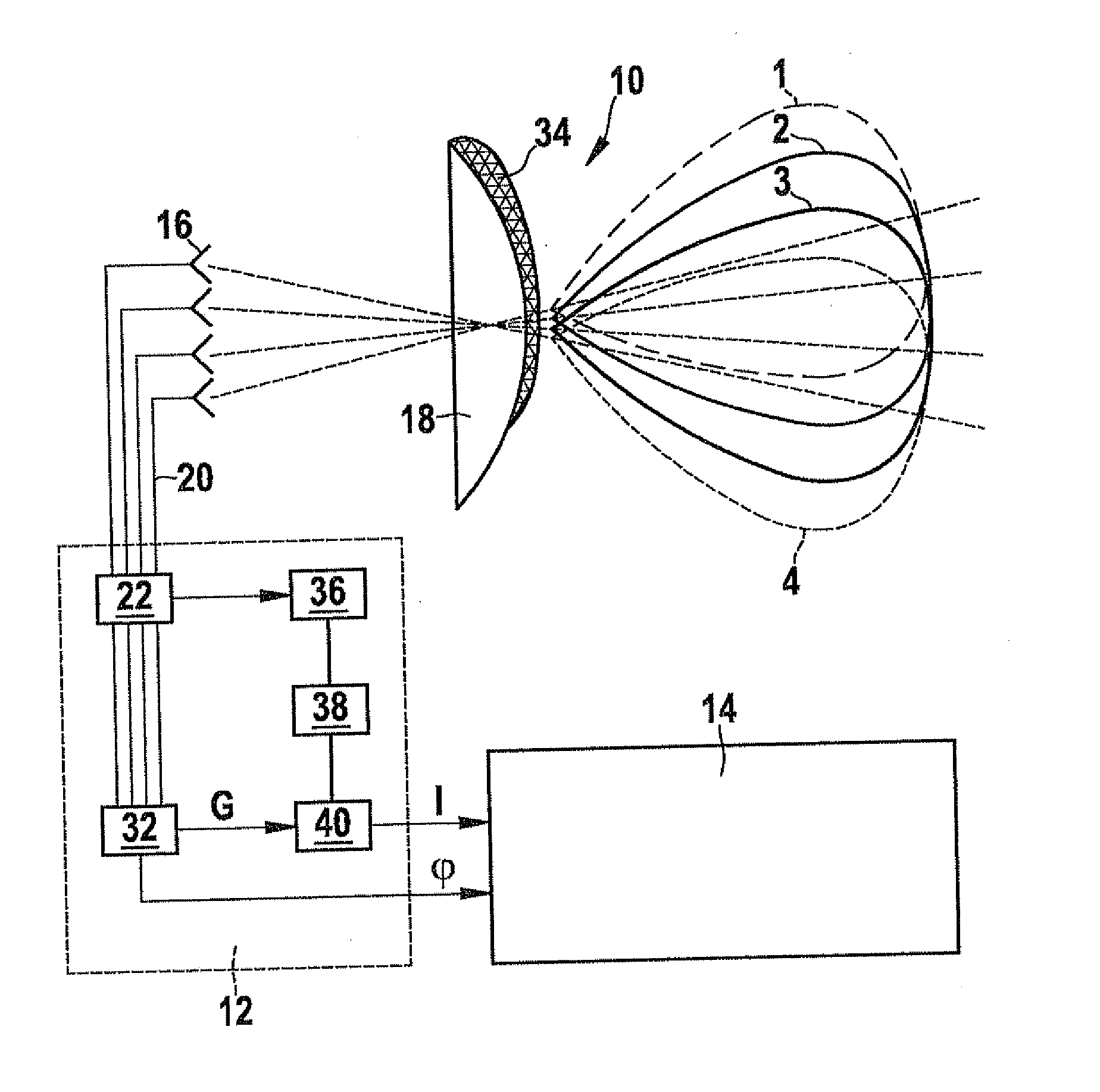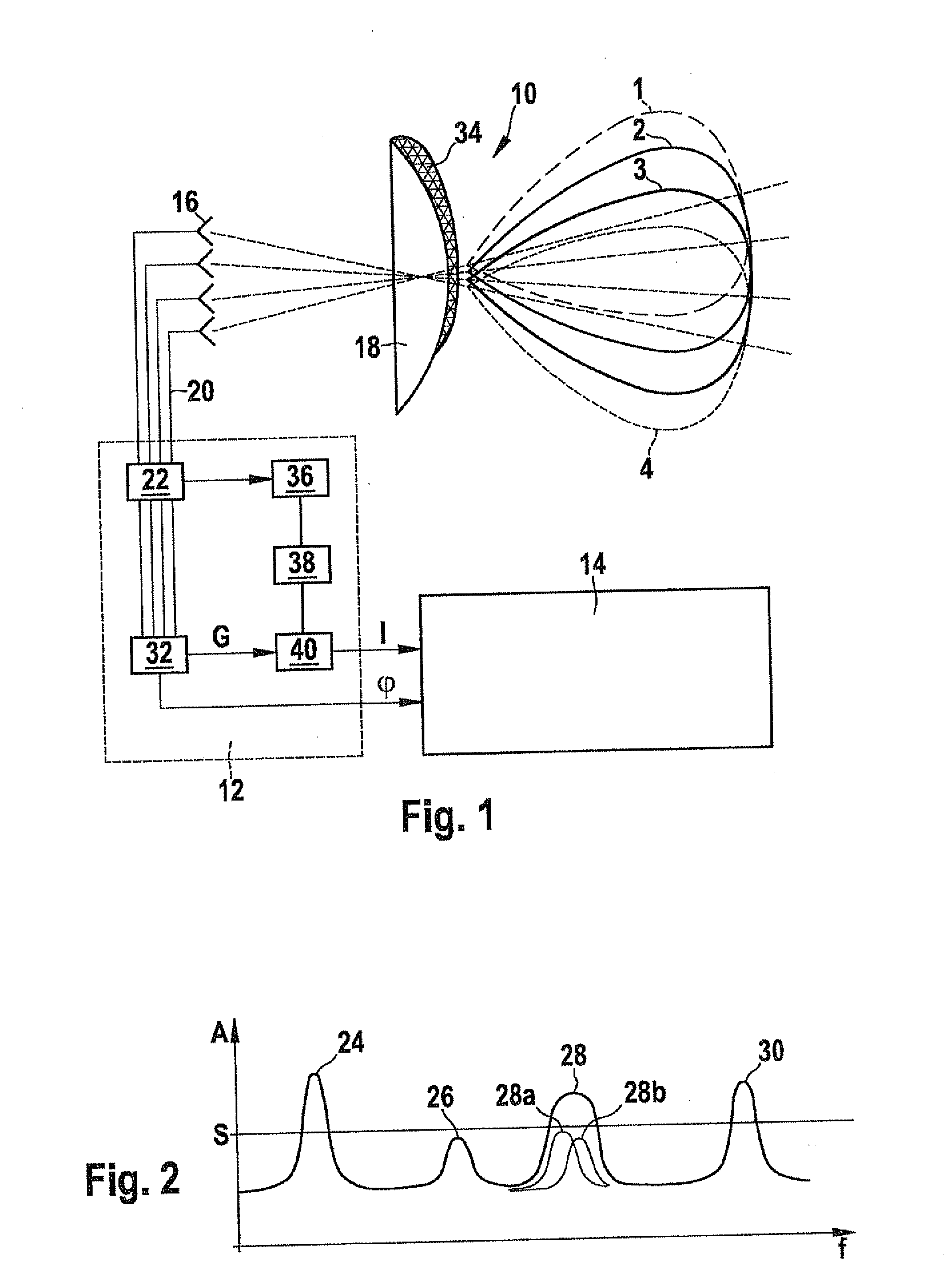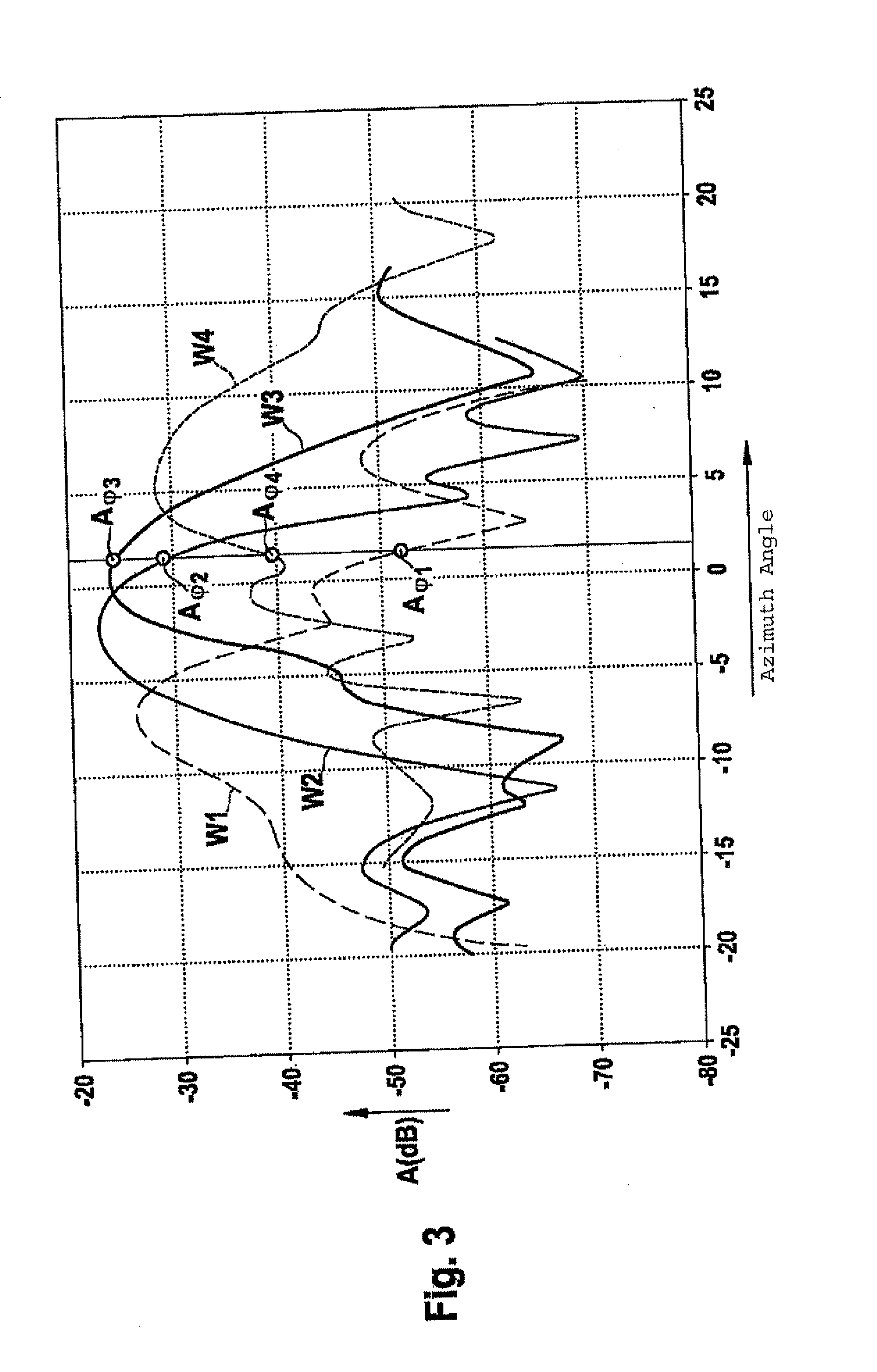Method for detecting icing at an angle-resolving radar sensor in a driver assistance system for motor vehicles
- Summary
- Abstract
- Description
- Claims
- Application Information
AI Technical Summary
Benefits of technology
Problems solved by technology
Method used
Image
Examples
Embodiment Construction
[0020]The driver assistance system shown in FIG. 1, for example an ACC system, includes a radar sensor 10, of which only the main components that are used in connection with the present invention are illustrated, a first evaluation stage 12 and a second evaluation stage 14.
[0021]Radar sensor 10 has four antenna elements 16, which are disposed in front of a common lens 18. When radar sensor 10 is installed in a motor vehicle, not shown, the optical axis of lens 18 points, for example, in the longitudinal direction of the vehicle, and antenna elements 16 are disposed in laterally offset relationship to one another on a horizontal line. The emitted radar radiation is concentrated by lens 18, and the received radar echoes are again focused onto antenna elements 16. The angular distribution of the emitted radiation and the sensitivity are symbolized in FIG. 1 by radar lobes 1-4, one lobe for each antenna element. Owing to the offset relationship of the antenna elements, the axes of the i...
PUM
 Login to View More
Login to View More Abstract
Description
Claims
Application Information
 Login to View More
Login to View More - R&D
- Intellectual Property
- Life Sciences
- Materials
- Tech Scout
- Unparalleled Data Quality
- Higher Quality Content
- 60% Fewer Hallucinations
Browse by: Latest US Patents, China's latest patents, Technical Efficacy Thesaurus, Application Domain, Technology Topic, Popular Technical Reports.
© 2025 PatSnap. All rights reserved.Legal|Privacy policy|Modern Slavery Act Transparency Statement|Sitemap|About US| Contact US: help@patsnap.com



